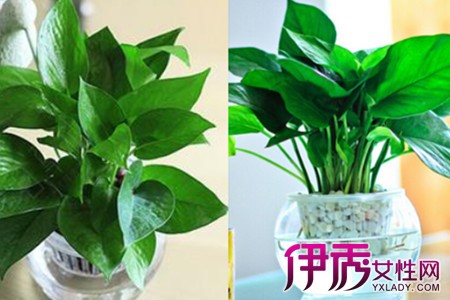How to cultivate orchids to teach you to raise this kind of flower correctly

Orchid is a kind of noble and elegant flower with a fresh fragrance. Friends who like growing flowers all like this kind of flower very much. But not everyone can raise this kind of flower well, so the editor will introduce the method of orchid culture.
Orchids prefer to grow in sunny places and can be raised outdoors in spring, summer and autumn. If it is raining, it can be caught in some light rain, if it is heavy rain or showers, it is necessary to take some rain-proof measures. If it is winter, it should be raised indoors with plenty of sunshine.
When changing pots to plant orchids, do not plant it too deep, the head of orchids should be exposed outside the basin, if the head is not exposed, it is easy to be suffocated. In addition, the soil should choose a relatively loose soil to plant, do not have clayey soil. Water thoroughly when planting. Don't always water it at ordinary times.
Usually pay more attention to observe the leaves of orchids to prevent pests from harming it. If pests are found to be removed in time, they can be scraped off with cotton swabs or some insecticides can be used to kill insects.
When fertilizing orchids, it is necessary to dilute the fertilizer and water. In addition, it should not be drenched on flowers, leaves and stems when fertilizing. In this way, the leaves and stems of flowers may be burned to death. Orchids are suitable for growing in semi-dry soil, preferably 8% dry and 2% wet soil. Therefore, usually watering should not be watered too much, you can look at the soil of the orchid to water, found that the surface of the soil has been dry and rewatered. If watered every day, the roots of orchids may be soaked because of stagnant water.
In order to enhance the orchid's anti-virus ability and protect the absorbed water from loss, you can mix 1000 ml of water with 0.5g aspirin powder and water the orchid once a month, so that the orchid will have stronger vitality.
A course on Culture methods and steps of Orchid Flower
Orchid flower, also known as orchid, is one of the plants endemic to China. Now most of the orchid flowers in other countries in the world are introduced from China. It is a beautiful ornamental plant, the first of all flowers in people's eyesight, and it implies auspiciousness and a symbol of positive energy. People usually like to raise orchids at home, but if you want to raise orchids well, you must have a comprehensive understanding of its breeding methods, otherwise it is very tolerant of death. The following is my specific introduction to the method of orchid flower culture. If you like this kind of plant, you can focus on it.
1. Correct selection of soil for planting
Orchid flower culture should correctly select soil, this kind of plant likes fertile soil, it is best to use black mountain mud and peat soil and pastoral Gui to make culture soil, and then when planting orchid flowers, they should also plant it in the middle of the flowerpot and bury it in the soil. the upper layer compacts the soil and pours it with enough water. Slow the seedlings in a cool environment, and they will survive after half a month.
2. Sunlight and moisture
Sunlight and water are important conditions for breeding orchid flowers, it is a kind of light-loving plant, but it should be placed in an environment with sufficient scattered light, especially after entering summer, if it is placed on the windowsill or balcony, it should be shaded in time. In addition, cultivated orchid flowers should be moderately watered. In spring and summer, it can be watered every 3 to 4 days, but after entering late autumn and winter, it is necessary to reduce water supply, otherwise it will cause a variety of diseases.
3. Fertilizer
Fertilizer and construction team are also important steps in cultivating orchid flowers. although this plant likes fertilizer, it can not apply thick fertilizer. Usually, bean cake water and horseshoe sauce residue water should be used as the main fertilizer, which should be used every 10 to 15 days. Potassium dihydrogen phosphate can also be added before and after he enters the flowering stage, so that it can blossom as soon as possible and prolong the flowering period.
4. Self-cultivation
When many people breed orchid flowers, they plant them in flowerpots, fertilize and water them on time, but never pay attention to pruning, which is also wrong. in the process of breeding, it must be pruned its old leaves and withered leaves in time, so as to promote the growth of new leaves. In addition, after the orchid flower has a disease, it is necessary to cut off all the infected branches and leaves so as not to affect other healthy leaves.
The cultivation method of succulent Christmas cactus how to raise Christmas cactus
Do you know? We succulent world also have representative Christmas mascots, just like we have to raise a pot of daffodils indoors for the Spring Festival, and the house is full of fresh and delicate fragrance. In western countries, people choose to plant a Christmas cactus with eye-catching colors. Christmas cactus, a beautiful holiday plant (botanically called crab claw orchid), usually blooms at Christmas and sometimes blooms around Easter if properly cared for. Here are the breeding methods of succulent Christmas cactus to teach you how to raise Christmas cactus.
Methods / steps
The Christmas cactus is a light-loving plant, but avoid direct sunlight and place the plant in a well-lit position (such as near a window). Stay away from direct sunlight (which can hinder plant growth and sunburn leaves), heating, heat holes, fireplaces or other sources of hot air. In summer, move indoor plants to a shady location outdoors. It is best to maintain a normal indoor temperature range (18.3-26.7 ℃).
If you are in a dry environment, use a humidifier to place a plate of water next to the plant, using the evaporation of water to provide moisture. In addition, you can make a humidifying tray and put the plant pot on a waterproof dish half full of gravel and half water.
Carefully watering the Christmas cactus and watering the plant can be tricky because you need to be careful not to water too much and you can't run out of water:
There must be no shortage of water, because the Christmas cactus is a tropical cactus, not a desert cactus. Unlike most desert cacti, this variety cannot adapt to completely dry soil. If the soil is too dry, the flower bracts will wither and the plants will wither. Feel the soil with your fingers. If it feels dry, it's time to water it.
Too much watering will lead to white rot spots on the leaves, which may fall off. Evenly moist soil should be the best growing environment. The rule of thumb is that you'd rather have a little less than too much water.
When watering, water the whole plant. Before you try to water the plant again, check that the top few inches of soil is completely dry. Spray the leaves and water the soil.
The watering frequency of cactus depends on your environment and season. Here is a good way to water for your reference:
Dry climate, outdoors: water every two to three days, choose a warm and sunny time.
Damp, cool or indoors: water once a week.
In autumn and winter, the frequency of watering plants should be reduced to promote bud blooming.
Don't water the top of the plant. Find a container with many small holes at the bottom. Some cheap nursery flowerpots will be suitable, or orchid flowerpots or plastic baskets will do. Pair this cultivation vessel with a vessel that can hold water and hold a basket. Place several medium-sized stones at the bottom so that the utensils that hold the basket are about an inch above it. The culture medium consists of three parts of potted soil and one part of sand. Finally, pour about two inches of warm water into the outer container, and the utensils that can hold the basket are placed on the inside. After about 12 hours, pour out the remaining water. Repeat this step whenever the plant needs water, which will change according to your situation. Use the instrument to monitor its water demand and adjust it accordingly.
Fertilizing to help plants grow for plants with active growth, indoor flowering plant fertilizers should be added. The amount and frequency of fertilizer application are operated according to the instructions of the label. Fertilization is important for keeping plants in good condition; if the plant is in poor health, its joints can be fragile and can be easily broken. Generally speaking, fertilization should be applied 2-4 times a year and 20-20-20 feed should be used, but fertilization should be stopped about a month before the bud appears (which usually means stopping at the end of October).
To make it blossom during the holiday season, to get Christmas cactus flowers during the festival, the key is proper light, correct temperature and proper watering.
Because the plant has a thermo-photoperiod property, it will germinate in the weeks when the temperature drops to 10-15.5 ℃.
Please put it in the dark bathroom for the night. During the autumn months, the Christmas cactus should be placed in a place where indirect, bright light is received indoors during the day and completely dark at night (especially when there is absolutely no artificial light). Christmas cactus takes a long, uninterrupted period of darkness, about 12 hours or more every night. Dark treatment begins around mid-October, allowing plants to blossom during the festival. Place the plant in a dark area for about 12 hours or more each night for 6-8 weeks until you see the bud forming. Closets or unused bathrooms are ideal places for shading.
From September to October, the Christmas cactus should be placed indoors in a cool place, where the temperature will be kept at about 10 ℃ and can fluctuate several degrees up and down. Don't keep plants at temperatures that can freeze. If cold treatment begins in early November, plants should be able to blossom during the holiday season.
Special care should be taken in watering during this period. Slightly reduce watering. After the drying period, do not soak the soil, just moisten a few inches of the surface, because if the roots suddenly become saturated, the buds, flowers and even leaves will fall off.
About a month after flowering, pruning the Christmas cactus will promote plant branches, especially after a period of time known as "rest". When the flowers fade, the cactus doesn't look good. So some people wait until around March, when they are in a new growing period, and start pruning the cactus.
Cut off part of the flower stem and breed the Christmas cactus each section must consist of two or three segments. After drying each section for several hours, bury them in a 3-inch pot filled with parent soil. First plant half of the first paragraph. Cut like a mature plant. In about four to six weeks, the cuttings should have taken root and will enter a new growth period. They will grow rapidly in about two or three weeks. You can start fertilizing after it grows its first new segment.
Tips
The most frustrating thing about taking care of the Christmas cactus is that the bud falls when it is in full bloom. Falling bud may be caused by a variety of reasons. It is usually due to overwatering, insufficient humidity or insufficient light. And when you can't provide enough sunlight, the cactus may die from lack of sunlight.
Plants must be diverted regularly to promote new growth. Otherwise, the plant will have buds in full bloom on one side and bare on the other.
Christmas cactus is a beautiful plant that can bloom year after year. You will want to keep it after the holiday. You can even pass it on from generation to generation.
The cactus only grows in the circumference of the potted plant. If you want a bigger plant, you need to put it in a larger pot.
Use new and good soil when replanting or turning the basin. It is worthwhile to spend some extra money because it will survive in this soil for a long time. Your plant, like you, is alive, and it deserves the best care.
The above advice on bud blooming applies to areas with a cold Christmas. If you live in the southern hemisphere, you may find it difficult to make the plant bloom during the Christmas season, which requires more control to bloom during the holiday season. It may be easier for them to bloom in the coldest months of the year.
The best time to change the basin is between February and April, about every three years. Make sure you don't give it a big basin. Christmas cactus bloom best when it fits. Provide a well-drained, well-ventilated soil environment (for example, one part of potted soil, two parts of peat moss or compost, plus one part of sharp sand or perlite).
Matters needing attention
Christmas cactus is non-toxic to dogs and cats, according to a study by the Poison Control Center of the American Society for the Prevention of Cruelty to Animals.
Any sudden change in temperature, light or moisture can cause damage to the Christmas cactus. Dryness and extreme temperatures can cause plant buds to fall off before they have a chance to open buds. It is recommended to try "gradual change".
Christmas cactus should never be placed at the door or near the outdoors. Also, keep it away from the heating pipe or fireplace and tuyere.
- Prev

The method of hydroponic culture of green turnip can grow luxuriantly in water.
Green pineapple is a plant that everyone is very familiar with, and many people will raise it in the soil. In fact, green pineapple can also be cultivated very well in water. But do you know the way to grow green pineapple in water? The editor will share the method of hydroponic culture of green pineapple today.
- Next

How to make a fortune tree trunk soft? Find the right reason to cultivate it easily
Fortune tree is a relatively good breeding plant, although this people in the breeding will also appear soft trunk phenomenon. Many friends who like to raise flowers are very upset when they encounter this situation. The article explains the reasons for these phenomena. You can look at the solutions.
Related
- Fuxing push coffee new agricultural production and marketing class: lack of small-scale processing plants
- Jujube rice field leisure farm deep ploughing Yilan for five years to create a space for organic food and play
- Nongyu Farm-A trial of organic papaya for brave women with advanced technology
- Four points for attention in the prevention and control of diseases and insect pests of edible fungi
- How to add nutrient solution to Edible Fungi
- Is there any good way to control edible fungus mites?
- Open Inoculation Technology of Edible Fungi
- Is there any clever way to use fertilizer for edible fungus in winter?
- What agents are used to kill the pathogens of edible fungi in the mushroom shed?
- Rapid drying of Edible Fungi

